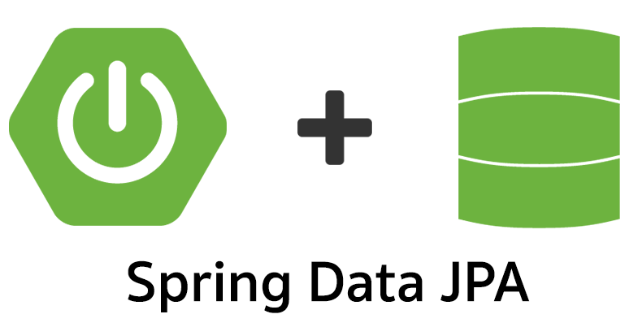Spring Data JPA Tutorial

Welcome to the Spring Data JPA Tutorial! Spring Data JPA is a powerful and versatile framework that simplifies data access and persistence in Java applications. In this comprehensive tutorial, we will explore all aspects of Spring Data JPA, equipping you with the knowledge and skills to build efficient, data-driven applications.
What is Spring Data JPA?
Spring Data JPA is part of the larger Spring Data project, which provides a consistent and easy way to access data from various data stores. Spring Data JPA specifically simplifies data access in Java applications using the Java Persistence API (JPA). Key features of Spring Data JPA include:
- Repository Abstraction: Spring Data JPA offers a repository abstraction that eliminates the need to write repetitive data access code. It provides ready-to-use methods for common data operations.
- Query Methods: You can create custom queries using method naming conventions, allowing you to express complex queries in a concise and type-safe manner.
- JPQL and Native Queries: Spring Data JPA supports both JPQL (Java Persistence Query Language) and native SQL queries, giving you flexibility in querying your data.
- Specification and QueryDSL: You can define complex query criteria using Specifications and QueryDSL, enabling dynamic and advanced query capabilities.
- Auditing: Spring Data JPA supports automatic auditing of entities, tracking changes like creation and modification timestamps.
- Pagination and Sorting: Easily implement pagination and sorting of query results for better performance.
- Custom Implementations: Extend repository interfaces with custom query methods and implementations for specific use cases.
Why Learn Spring Data JPA?
Mastering Spring Data JPA offers several advantages for Java developers and software engineers:
- Efficient Data Access: Spring Data JPA simplifies data access and persistence, reducing the amount of boilerplate code required.
- Type-Safe Queries: Query methods provide type safety, helping catch errors at compile time rather than runtime.
- Standardization: Spring Data JPA adheres to JPA, a Java EE specification, ensuring compatibility and standardization.
- Saves Time and Effort: Writing and maintaining custom data access code is time-consuming; Spring Data JPA automates many of these tasks.
- Community and Support: The Spring ecosystem has a robust community and resources for learning and problem-solving.
- Integration: Spring Data JPA seamlessly integrates with other Spring projects, databases, and frameworks.
What You’ll Learn in This Tutorial
This Spring Data JPA Tutorial is designed to take you from a beginner to an advanced level in Spring Data JPA. Here’s an overview of the topics we’ll cover:
- Getting Started: We’ll begin with the basics, setting up a Spring Data JPA project, configuring the data source, and introducing you to the repository abstraction.
- Entity Mapping: Learn how to map Java entities to database tables using JPA annotations.
- CRUD Operations: Understand how to perform Create, Read, Update, and Delete operations using Spring Data JPA repositories.
- Query Methods: Explore the power of query methods, including custom query creation and dynamic queries.
- JPQL and Native Queries: Dive into writing custom queries using JPQL and native SQL.
- Specifications and QueryDSL: Create complex query criteria using Specifications and QueryDSL.
- Auditing and Versioning: Implement auditing and versioning for tracking entity changes.
- Pagination and Sorting: Enhance the performance of your application by implementing pagination and sorting for query results.
- Custom Implementations: Extend repositories with custom query methods and implementations for specific use cases.
- Best Practices: Throughout the tutorial, we’ll emphasize best practices for using Spring Data JPA effectively in real-world projects.
Prerequisites
To get the most out of this Spring Data JPA Tutorial, you should have a basic understanding of Java programming and some familiarity with databases and SQL. However, even if you’re new to these concepts, we’ll provide explanations and examples to help you grasp the fundamentals.
Who Can Benefit from This Tutorial?
This tutorial is suitable for:
- Java developers interested in simplifying data access and persistence in their applications.
- Software engineers looking to enhance their Java skills and learn about Spring Data JPA.
- Students and professionals aiming to build efficient and data-driven Java applications.
How to Use This Tutorial
This Spring Data JPA Tutorial is structured as a series of lessons, with each lesson building on the knowledge and skills you’ve gained in previous sections. You can use this tutorial in the following ways:
- Step-by-Step Learning: Start from the beginning and work your way through each lesson to gradually build your Spring Data JPA skills.
- Reference Material: Use individual lessons as quick references for specific Spring Data JPA topics or issues you encounter in your projects.
- Hands-On Practice: Each lesson includes practical examples and exercises that you can follow to gain hands-on experience with Spring Data JPA.
Let’s Get Started!
Now that you have a clear understanding of Spring Data JPA and its benefits, it’s time to dive into the first lesson and begin your journey to mastering Spring Data JPA. Whether you’re a beginner or an experienced developer, this tutorial equips you with the knowledge and skills needed to effectively leverage Spring Data JPA in your Java projects. Happy learning!
Conclusion
Spring Data JPA is a powerful framework for simplifying data access and persistence in Java applications. Learning Spring Data JPA empowers you to build efficient and data-driven software. This tutorial covers everything from the basics to advanced topics, providing you with the knowledge and skills needed to become a proficient Spring Data JPA developer. Whether you’re new to Spring Data JPA or seeking to deepen your expertise, this tutorial is your comprehensive guide to success.
